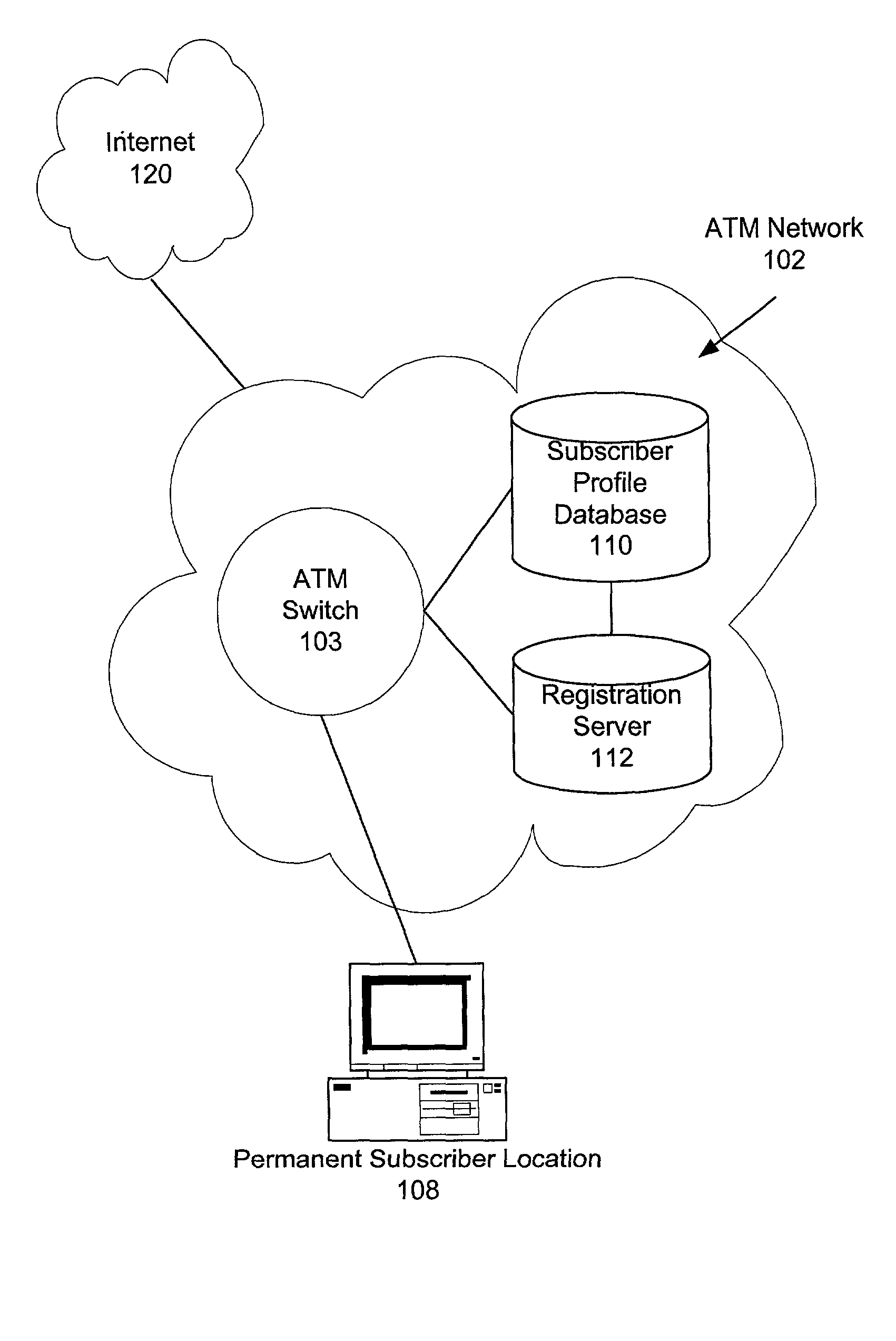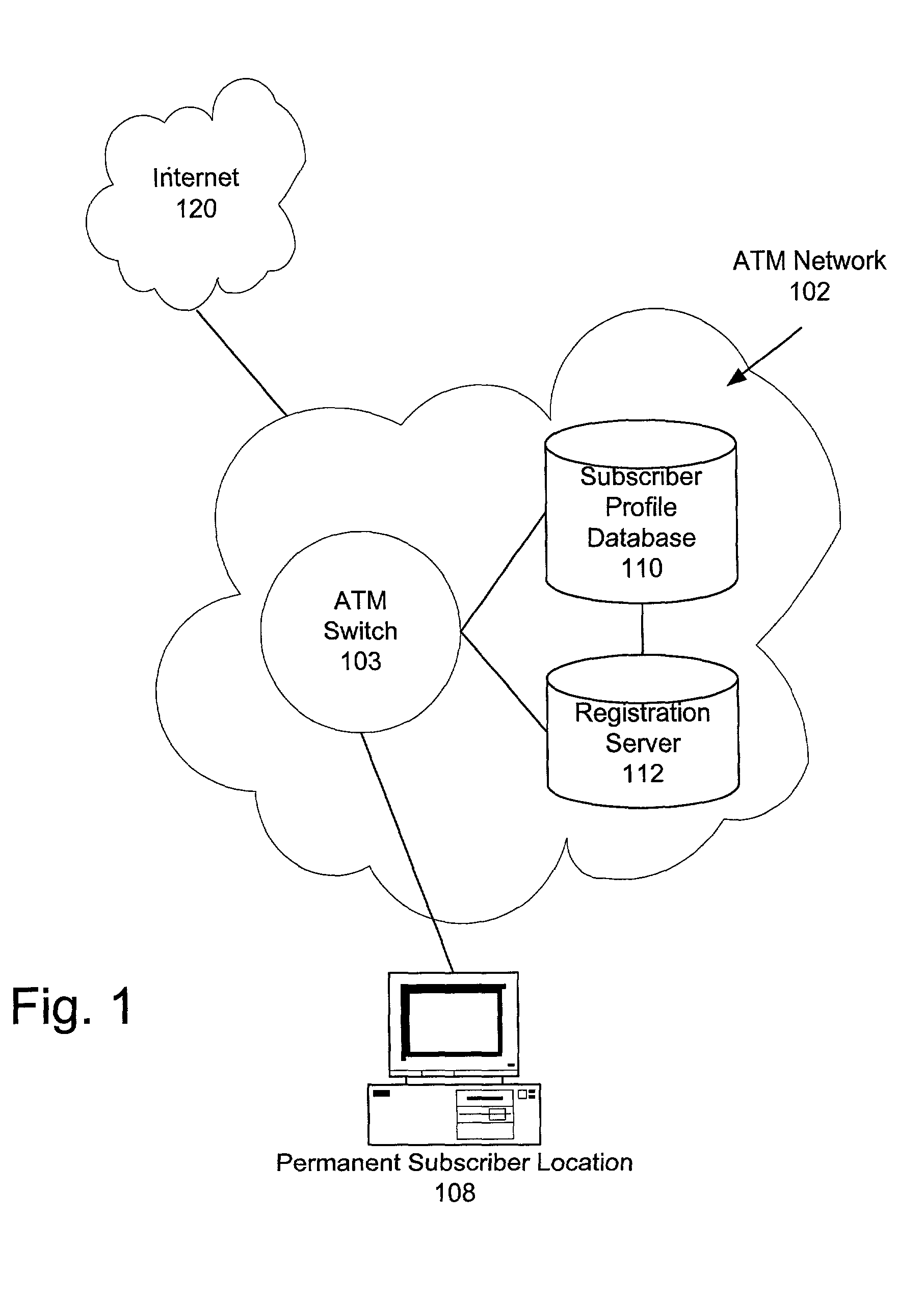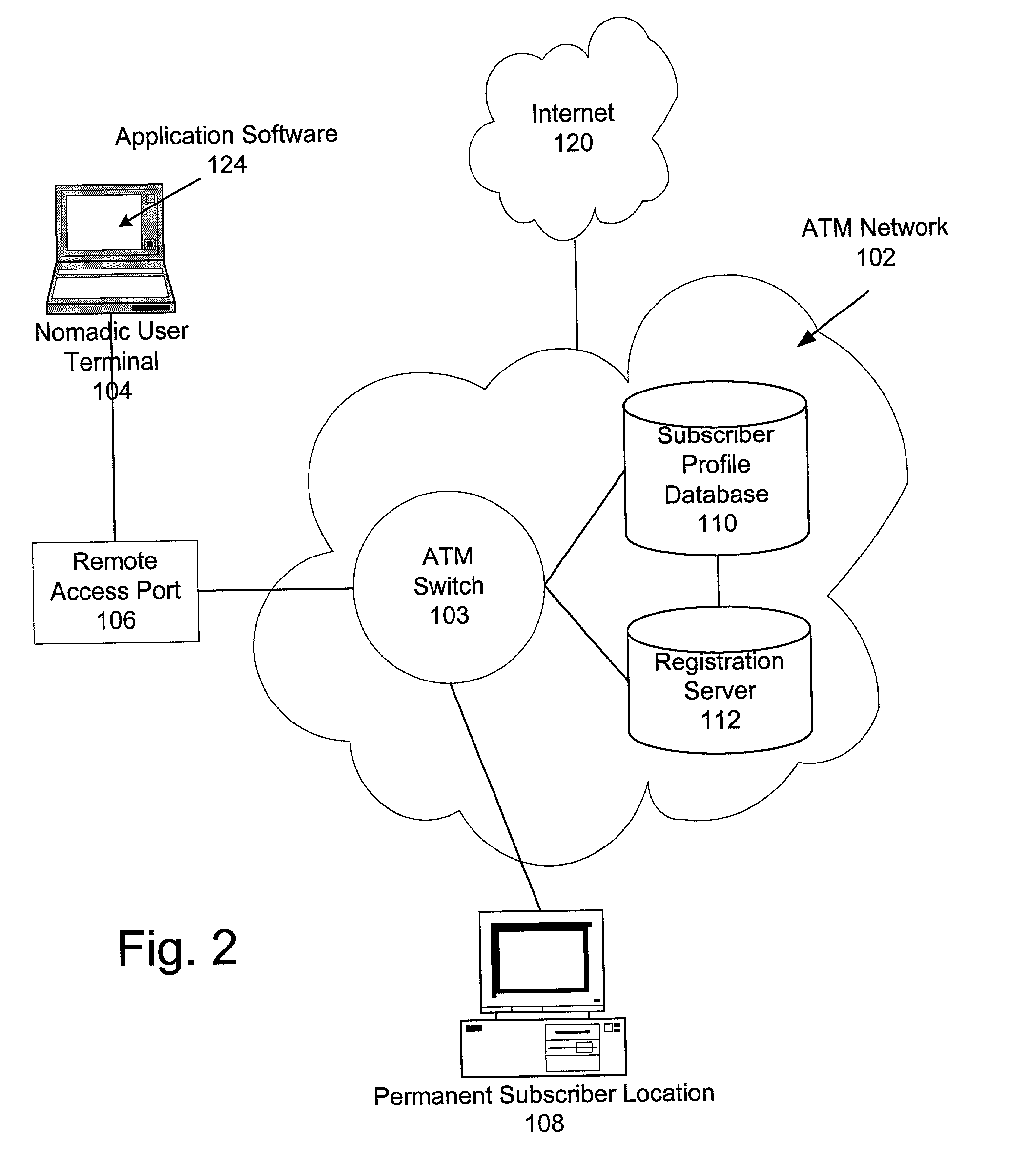Authentication for use of high speed network resources
- Summary
- Abstract
- Description
- Claims
- Application Information
AI Technical Summary
Problems solved by technology
Method used
Image
Examples
Embodiment Construction
[0021] In view of the above, the present invention through one or more of its various aspects and / or embodiments is presented to accomplish one or more objectives and advantages, such as those noted below. It is noted that although the embodiments described below are described with reference to ATM networks, any high speed network employing SVCs, such as an IP network and an optical network, can operate according to the principles of the present invention.
[0022] An aspect of the present invention provides a method for associating a switched virtual circuit (SVC) connection request in a high speed data network with a network subscriber. The method includes receiving a signaling protocol message requesting the SVC connection from the subscriber at an access port and determining whether the signaling protocol message contains authentication data to authenticate the subscriber. The access port may be different from a permanent access port of the subscriber. When the subscriber is authen...
PUM
 Login to View More
Login to View More Abstract
Description
Claims
Application Information
 Login to View More
Login to View More - R&D
- Intellectual Property
- Life Sciences
- Materials
- Tech Scout
- Unparalleled Data Quality
- Higher Quality Content
- 60% Fewer Hallucinations
Browse by: Latest US Patents, China's latest patents, Technical Efficacy Thesaurus, Application Domain, Technology Topic, Popular Technical Reports.
© 2025 PatSnap. All rights reserved.Legal|Privacy policy|Modern Slavery Act Transparency Statement|Sitemap|About US| Contact US: help@patsnap.com



